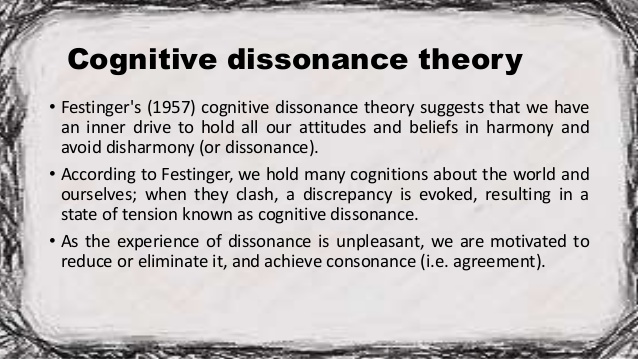Mitigating Cognitive Dissonance In Our Project
Many of the cards were normal, but some were made anomalous, e.g., a red six of spades and a black four of hearts. … With a further increase of exposure to the anomalous cards, subjects did hesitate and to display awareness of anomaly. … Moreover, after doing this with two or three of the anomalous cards, they would have little further difficulty with the others. A few subjects, however, were never able to make the requisite adjustment of their categories. … And the subjects who then failed often experienced acute personal distress. The Structure Of Scientific Revolutions, Thomas S. Kuhn, Fourth ed, 2012.
I was always convinced that once someone understood what I was talking about, really understood, then getting the change that I was advocating was all but guaranteed. Part of this was clearly my naivete, but it was also the case that in many occasions it worked. What continually threw me were the people who would continue to push back. I recognized the ones that did so because they were trying to compete with me. As one person admitted, it was just like hitting someone in football. You just did it because it was part of the game. Yet some people with no obvious agenda just didn’t want the proposed approach and I couldn’t figure out why. I was sure if I could figure out why they resisted, I could then help them become comfortable and supportive of the actions.
Over time I finally realized that some people were just uncomfortable because they were just uncomfortable. They probably weren’t even sure why in any way that was explainable, though they would inevitably bring up some explanation. I hated to ignore these people, so I continued to go out of my way and talk with them at least occasionally, even as we pushed on with things that they did not support.
Periodically, this continued attempt to keep trying to understand someone’s position resulted in some unexpected surprises. On one occasion, with an individual who was strongly against our plan, we continued our discussion over the next several days. I pressed on with the initiative while this other discussion was going on. On about day three of primarily an e-mail exchange, the objecting individual sent me an e-mail and said he intended to support the effort? Why? Did I wear him out? No. It was because, he said, I took the time to try and understand his concerns. If I was willing to take this much time, then he was comfortable, though he disagreed with the focus, working for the project because he felt he would at least be listened to.
Recognizing that there are some people who just object because they are uncomfortable for no identifiable reason or just need to object, helped me to better manage when making a change. It still didn’t make it any easier, but at least I understood that there was probably little I could do to directly change their position. However, by continuing to try and understand all objections we unexpectedly won over many additional people.
How are you handling the people who resist the changes your project is implementing?
